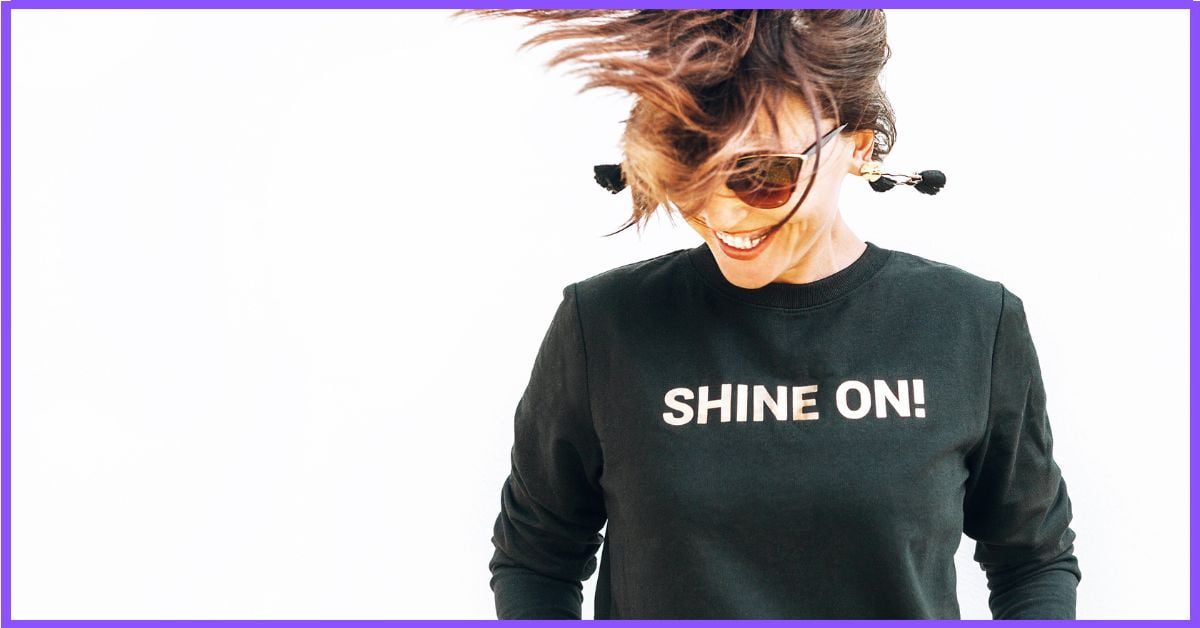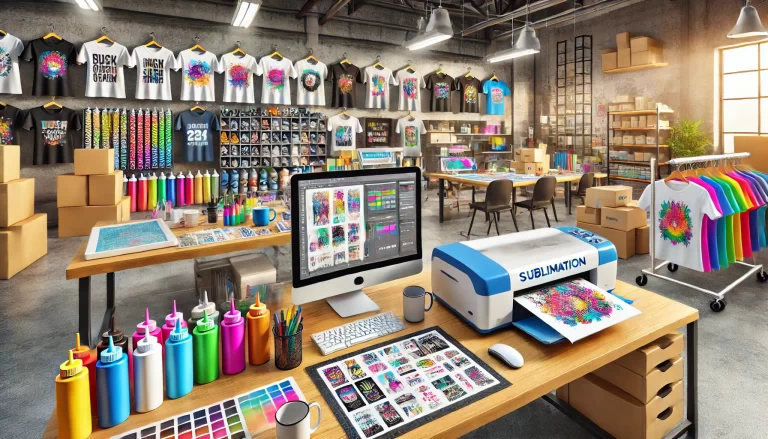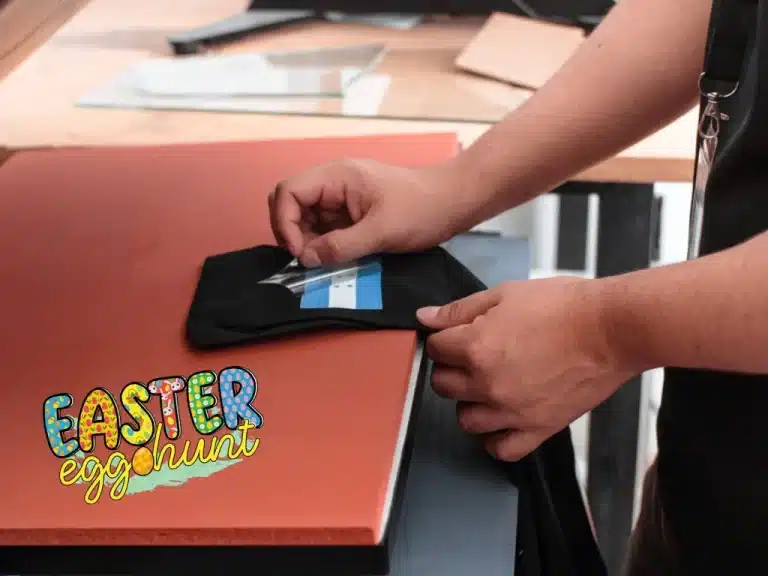Is it good for DTG printing on a black shirt?
Direct-to-garment (DTG) printing allows photorealistic, full-color designs on black shirts. But lighter ink colors need to show better on dark fabrics. Learn how to get the best results with DTG printing on a black shirt through proper pretreatment, white ink layers, color adjusting, and best practices.
What is DTG Printing?
DTG printing is a highly effective technique that enables the direct printing of full-color designs onto fabric, utilizing specialized inkjet printers. It allows for printing photorealistic designs in vibrant colors on fabrics like cotton, polyester, and blended fabrics. But is DTG printing suitable for black shirts? Here are some key points to consider:
Is it good for DTG printing on a black shirt?
Yes, DTG printing on black shirts is possible, but it requires adjustments like white ink under the base layer and darker, bolder colors for the best results. Print durability may be slightly reduced on black versus light shirts. With proper technique, DTG can print well on black shirts, though there are some limitations to be aware of.
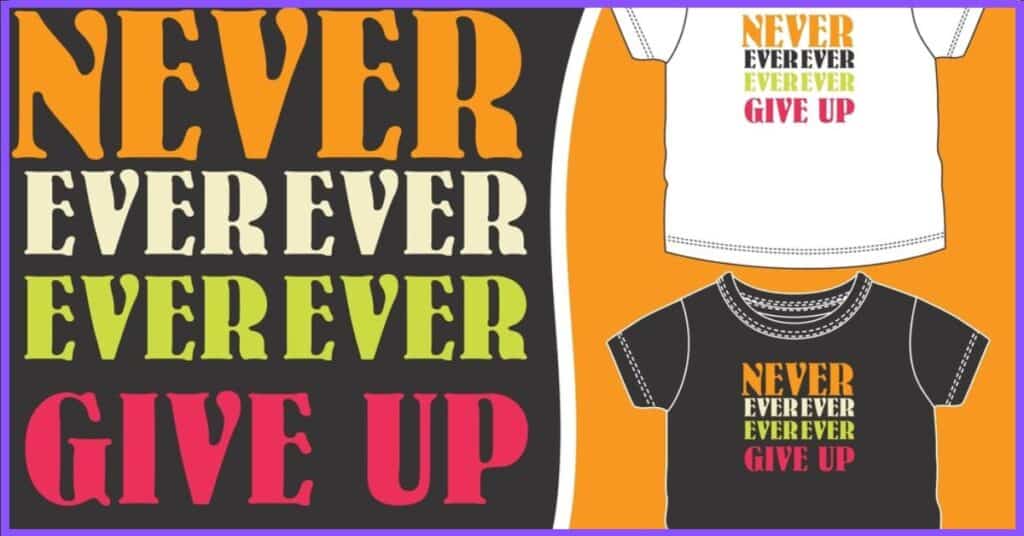
Light Ink Colors on Dark Fabrics
One of the main challenges with printing on black shirts is that lighter colors, like yellow, light pink, light blue, etc., do not appear well on dark fabric. DTG uses CMYK ink colors, so reproducing vivid bright colors on black can be difficult. The white ink in DTG printers helps but has limitations.
White Ink Layer
Many DTG printers have a white ink cartridge that lays down a layer of white before the colors. This acts as a “base,” so the colors on top will pop. However, white ink tends to be more opaque rather than bright white. So the colors on top will be muted and dull instead of vivid.
Test Prints Are Essential
It’s important to test print designs before printing a batch of black shirts. Check how the colors look when printed. Light pastel colors may not work well. Go for bright, bold designs instead. Verify the white ink under the base gives enough brightness. Adjust colors and use dark shades for a better visual effect.
Pretreatment is Key
DTG printing requires pre-treating fabric with a solution before printing. For black shirts, use a higher concentration or double-coat the pretreatment solution. This allows the white ink to bond better with the fabric. Proper pretreatment can improve print quality, washed-out colors, and cracking.
Post-Print Heat Pressing
After DTG printing, heat press the garment for 30-60 seconds to cure inks. Use a slightly higher temperature for black shirts and press a few seconds longer. This ensures inks are fully bonded to the fabric. Check manufacturer guidelines for temps and times.
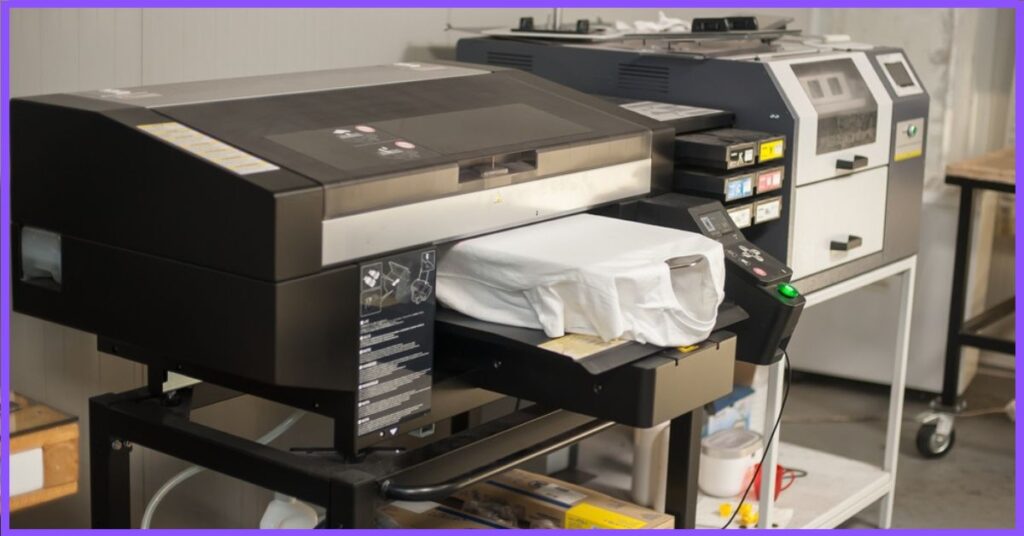
Pros and Cons of DTG on Black Shirts
Pros:
- Can achieve photorealistic, full-color prints
- No minimum orders required
- Lower setup costs compared to screen printing
Cons:
- Difficulty achieving bright colors on black fabric
- More pretreatment steps involved
- White ink has opacity limitations
- Higher risk of print defects or cracking
Best Practices for DTG on Black
- Test and adjust colors to use bold, dark shades
- Use appropriate pretreatment and heat press settings
- Inspect prints for defects before fulfilling orders
- Use higher quality blank black shirts
- Set customer expectations for color limitations
How long do DTG printing on a black shirt last?
- Most DTG printer manufacturers cite 10-15 washes as the average print lifespan under proper care and curing. Independent print shops report similar longevity findings.
- Achieving 50+ wash durability for DTG is uncommon and would require exceptionally high-quality pretreatment, inks, printer maintenance, and perfect curing/heating settings – difficult to achieve consistently.
- For high-volume wholesale screenprinting, 50+ washes may be expected. But DTG is geared more towards lower-volume, customizable printing where customers likely don’t expect such long print lives.
- While DTG prints may survive 50+ washes before complete deterioration, print quality degradation like fading and cracking would likely occur much earlier, as standard wash test results indicate.
- “Good enough” print quality for most DTG customers may mean acceptable results for 10-20 washes, not necessarily 50+.
Conclusion:
DTG printing on black shirts is possible but has some challenges. With testing and the right techniques, you can produce quality prints by using bold colors and adjusting pretreatment and curing processes. As long as the limitations are managed, DTG does provide the advantage of full-color printing directly onto black fabrics.
Explore the world of sublimation and printers with our comprehensive guide for more information or a step-by-step how-to guide.
FAQs:
Q. What type of shirt is best for DTG printing?
A. Soft, high-quality, 100% cotton shirts work best for DTG printing. Polyester blends can also work but may require ink and heat settings adjustments.
Q. What colors are recommended for DTG?
A. Bold, dark colors like black, navy, red, etc., show up best on black shirts. Pastels and light colors need to be fixed and can look faded.
Q. Can DTG print on any color?
A. DTG can print on light, dark, and colored shirts. But adjustments are needed for optimal printing on dark fabrics.
Q. Does DTG crack easily?
A. DTG prints can crack if not cured properly. Sufficient heat pressing ensures inks bond properly to avoid cracking.
Q. Does DTG fade easily?
A. Fading can happen if prints are washed incorrectly. Turn shirts inside out, wash in cold water, and line dry to prevent fading.
Q. What colors should I avoid with DTG printing?
A. Avoid light pastel shades like soft yellow, pink, and light blue on black, as they look faded and dull.
Q. Why does DTG look faded?
A. Insufficient white ink base layer and improper curing can make DTG prints look faded on dark fabrics.
Q. What color mode is best for T-shirt printing?
A. CMYK is the common color mode for DTG shirt printing. RGB colors will look different on fabric compared to the screen.
